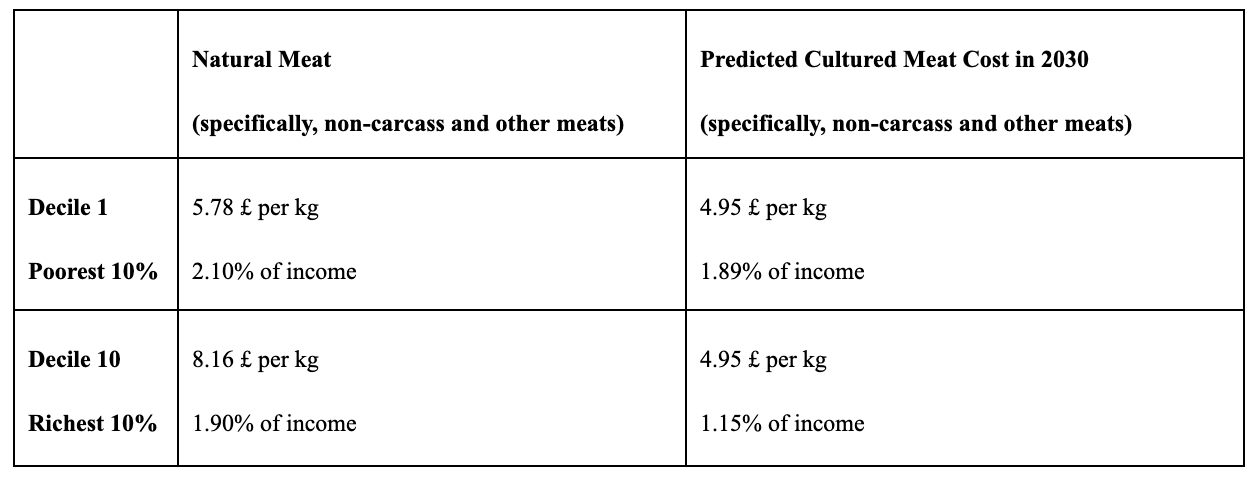Lab Grown Meats: A New Solution?
Lab-grown meats are not yet widely considered to be the new solution to the soaring food prices. However, the introduction of this greener and higher tech way to soften the predicted 70% hike in meat consumption by 2050, could be found in cell-cultivated meat production furthering the future of farming. Whilst some consider this innovation to have a Pandora’s Box effect, initiating discussions as to whether such lab-grown meat will be compatible with vegetarians or even Halal meat, the positives for alternative meat provision cannot be underestimated.
It is hard to ignore that, as millions globally move away from subsistence farming, and as there has been an increase in the Westernisation of dietary culture in the face of globalisation, meat consumption in the world population has drastically shifted. Between the years 1964 and 1966, average meat consumption per person per kg in East Asia was 8.7kg. From 1997 to 1999, that value increased to 37.7kg, increasing over 330%. Evidentially, cultivated meats provide a solution to satiate demand without having a toll on the planet, revolutionising the industry physically and economically.
Equally, it is possible to see that the favourable mechanism by which tissue cultures are extracted from the embryonic chicken heart provides the culture with significant nutrients; a technology which could be expanded to increase the lifelikeness of meat production given the appropriate investment, presenting a myriad of opportunities.
One such benefit that cultured meats have is removal of adverse amounts of waste which is becoming increasingly desirable. For example, the fact that we only eat the wings and breast of a chicken is blatantly wasteful, with 16.8 billion remaining chicken carcusses being wasted annually. The ASI’s local Butcher suggests that almost 1⁄3 of every chicken bought is discarded, amounting to almost 4 - 6 kg daily from a singular butcher, illustrating the fundamental wastefulness of the current meat industry.
The benefits that are attached to the modernisation of the agriculture industry cannot be underestimated, with farming fewer animals having the potential to reduce greenhouse gas emissions of gases such as methane and carbon dioxide by almost 78%-96%. Revolutionising one of the most environmentally harmful industries which inefficiently yields products can only be a positive. Cultured meats and their production within sterile labs require 99% less space than the traditional animal husbandry market, potentially saving 17.5 million hectares of the 17.6 million currently used for pastoral land. Such new land could be used for the much-needed housing developments in the UK or alternatively the reforestation of the British countryside is possible. The reduction in monoculture and the polluting disposal of pesticides would further protect the countryside and alleviate environmental concerns.
Equally, animal rights concerns would be relieved at the benefits that this would have on the movement of live animals and the unethical production of meat illustrated by battery hens, satisfying a consumer preference whilst maintaining food production. The important sterile environment would also reduce zoonotic diseases, preventing outbreaks such as the Avian Influenza epidemic of 2021 reducing the number of livestock for consumption. Additionally, lab-grown meat has the potential to protect endangered animals, with the production of synthetic exotic meats devaluing poachers' keep and undermining the black market.
Perhaps most importantly, the greater affordability for the general populace remains significant but equally such modernisation would create the opportunity for ‘fashionable expensive meats’ to be bought up by the rich, satisfying all. Equally, the production of cultured meat and its acceptance into the food industry would predicate great food safety, enabling cultures to be taken from good quality meat and maintain sufficient regulation, as is currently being experienced by the FSA.
The problem currently is the price tag attached to the investment in lab grown meat production, however, with sufficient investment, prices could be a fraction of natural meat, aided by the removal of laborious red tape. Unnecessary over-protective regulations are the outcome of special-interest lobbying by large interest groups put up by Food Standard Authorities generating inefficiency in culinary advancement, as government officials wish to stick to the status quo and limit the potential for outside scrutiny.
Whilst funding for such innovative food production remains limited, with only a few large scale productions such as Mosa Meats’ televised hamburger event, where a €250,000, squashing its pioneering potential; the UK has proven to be on the frontline of domestic production, while only on a small scale. The UK-based pet-food company, Meatly, will begin selling its cultivated chicken to manufacturers as early as this year, setting the UK to become one of the first countries in Europe to commercialise ‘lab-grown’ meat, as a positive movement.
You can read Dr Madsen Pirie and Jamie Hollywood’s longer report here.

